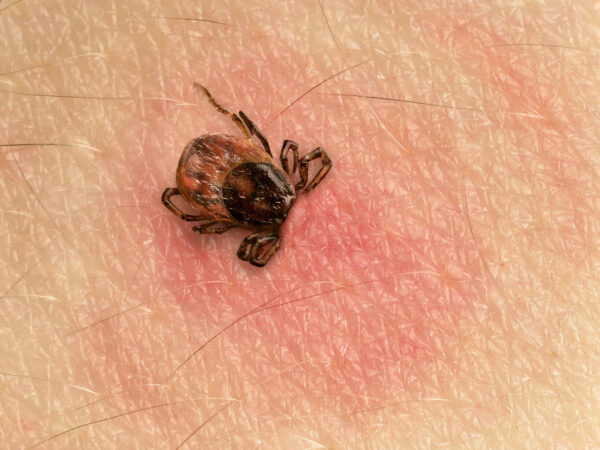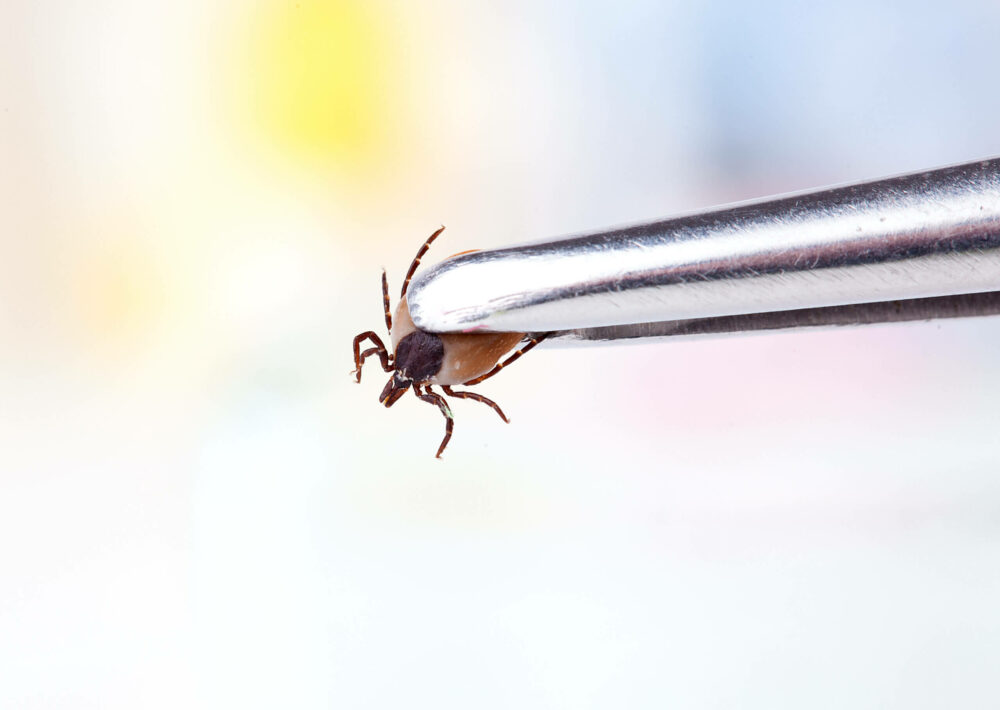Tick Borne Diseases – Symptoms & How to Protect Yourself
Lyme disease – Does that name send chills down your spine and make your heartbeat race? One thing is for sure, tick-borne diseases can be downright terrifying! These pests give ‘small but mighty’ a new meaning! How can something so tiny wreak so much havoc on a person?
Fevers, rashes, and muscle pain are all common symptoms that could result from a bite of an infected tick. There’s a wide range of illnesses these small pests can cause, so it’s important to learn about prevention. There are steps you can take to help prevent tick bites and the threat of the pathogens they carry.
You may be wondering, what diseases do they carry anyway? While Lyme is the most well-known, it isn’t the only one. Let’s take a look at some of the most common tick diseases and the symptoms to watch out for…
Lyme Disease
Lyme is one of the most common threats of tick-borne disease. This is caused by a tick that transmits the bacteria borrelia burgdorferi or borrelia mayonii. Most people have heard of the tell-tale bullseye rash, also known as Erythema Migrans (EM), that shows up 3 to 30 days after a tick bite, with the average being about 7 days after a bite. According to the CDC, between 70 to 80 percent of infected people will experience the rash at the site of the bite. Some other symptoms include headache, muscle aches, fever, and chills. Later stage symptoms include severe headaches, severe joint pain, facial or Bell’s palsy, heart palpitations, dizziness, shortness of breath, brain inflammation, nerve pain, and short-term memory problems.
If you suspect that you may have contracted Lyme, it is important to be seen by a medical professional to begin treatment as quickly as possible. If left untreated, Lyme can cause long-term, damaging effects.
Anaplasmosis
This illness is very similar to the more common Lyme Disease. They share a lot of the same symptoms and can be difficult to self-diagnose. Typically, symptoms of this illness will begin to show within 1-2 weeks of being bitten.
The most common symptoms are:
- fever, chills
- muscle aches
- nausea, vomiting, diarrhea
- severe headaches
If left untreated, the symptoms will increase in severity. Some of those include respiratory failure, bleeding problems, organ failure, and even death.
Babesiosis
This disease is not as common as Lyme and is a little bit more unique, as many people do not experience symptoms at all. The bacteria (babesia microti) that causes this illness attacks the red blood cells and will occasionally cause anemia and jaundice. Those who are at the highest risk of complications are people with a weakened immune system and other health conditions. If you begin to experience yellowing of the skin or eyes, seek medical attention immediately.
Rickettsioses
If you are an outdoor enthusiast on the West Coast, you are more likely to encounter this disease than the rest of the United States. Belonging to the spotted fever family of illnesses, one of the first symptoms of this disease is a black or dark brown scab at the site of the tick bite called an eschar.
Like other tick-borne illnesses, the typical fever, chills, muscle aches, and fatigue soon appear after the scab. Many spotted fevers, including this one, are not life-threatening and will resolve on their own over time. However, it is advised that you speak with specialized healthcare providers for care. Antibiotics can treat the symptoms quickly, giving you much-needed relief!
Rocky Mountain Spotted Fever (RMSF)
This is the more significant, meaner cousin to Rickettsioses. RMSF is often transmitted through the brown dog tick, American dog tick, and Rocky Mountain wood tick. The symptoms of this disease tend to be more intense and life-threatening. RMSF is known to progress to a more serious situation quickly and must be treated as soon as possible. Some symptoms include:
- headache, muscle pain
- stomach pain, nausea, vomiting
- lack of appetite
- fever
- rash
RMSF can cause permanent, long-term damage to the body if left untreated for too long. If you find that a tick has bitten you, pay attention to your body over the next few days, and seek medical help immediately if strange symptoms arise. The quicker you get treatment, the better.
Ehrlichiosis
According to the CDC, A bite from an infected lone star tick or a blacklegged tick is a common cause of ehrlichiosis. These types are most often found in the south-central and eastern US, Minnesota, and Wisconsin. This illness is transmitted through a bacteria known as Ehrlichia muris eauclairensis.
Ehrlichiosis is a disease from ticks with symptoms that include:
- Fever
- Chills
- Headaches
- Muscle and body aches
- Nausea and vomiting
It can also cause diarrhea, rash, and fatigue. 1 in 3 infected people will develop a rash, which usually occurs five days after the fever starts. The rash will look like red splotches or tiny dots.
It’s important to seek treatment from your healthcare provider at the first signs of symptoms. The first line of treatment that doctors recommend for ehrlichiosis is an antibiotic. If started in the first week of illness, it can prevent several complications. If treatment is delayed severe illness can set in, which includes:
- Brain damage
- Nervous system damage
- Respiratory illness
- Uncontrolled bleeding
- Organ failure
- Death
How to Prevent Bites
While there’s not really a way to completely stop any of these illnesses, there are steps you can take to help prevent yourself from being bitten.
Ticks are often in trees, bushes, and grassy areas and they are most active in warmer months. They are most likely to transmit diseases during their nymph stage of life. Knowing these facts, you can be more proactive in prevention; avoid wooded areas and stay on trails, treat clothing and gear with 0.5 permethrin, and use an EPA-recommended insect repellent that contains ingredients like picaridin. Consider EarthKind’s mosquito repellent.
If you are outdoors in an area where you believe these pests are active, perform a check when you get home to look for any on your body.
I Found a Tick on My Body, Now What?
First things first, don’t panic! We will give you simple, easy-to-follow tips on how to remove a tick. Harvard Health suggests that we don’t follow the myths! Refrain from doing the old wives’ tales like burning it, freezing it, covering it with petroleum jelly, and more. Those tips can do more harm than good. The longer this pest is attached, the higher the risk of spreading infection. You also don’t want to squeeze it which may cause regurgitation and also increases your risk.
CDC step-by-step guide – How to safely remove a tick
- Get a pair of fine-tipped tweezers.
- Grab the tick with light pressure as close to the base and skin as possible.
- Pull the tick out in a steady, upward motion. Be sure not to twist or yank on the tick.
- Once out, clean the area with soap and water and/or alcohol.
- Dispose of the tick.
There you have it! You now know some of the most common symptoms to watch out for and how to remove one of these pests if you find one. Believe it or not, there are more than 15 different types of diseases transmitted by ticks, so there are many that are not covered here. Many of them share similar symptoms to the flu and even COVID-19! If you do show any symptoms of disease after a bite, seek medical treatment immediately. A specialist will run blood tests to check for antibodies or to see if an organism is present in your blood.
Any time that you are spending time outdoors in tall grass and wooded areas, get into the habit of inspecting yourself for ticks when you get home. Also, take proper preventative measures such as using a repellent like Stay Away® Mosquitoes! It will allow you to spend time with nature without the worry!









 day
day